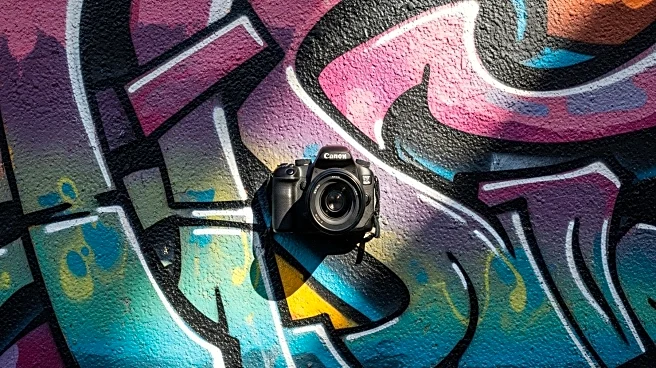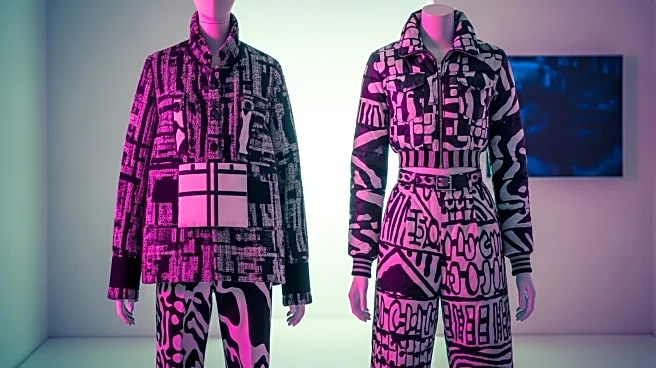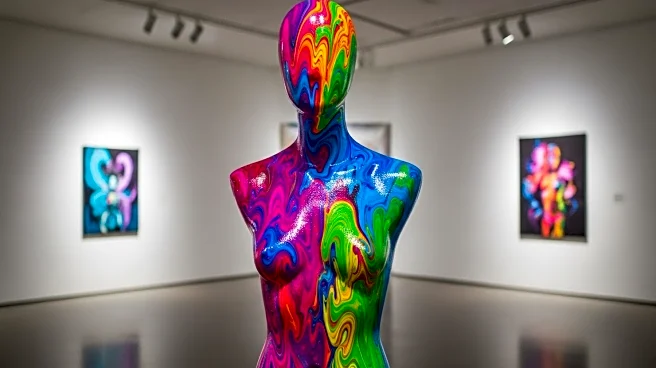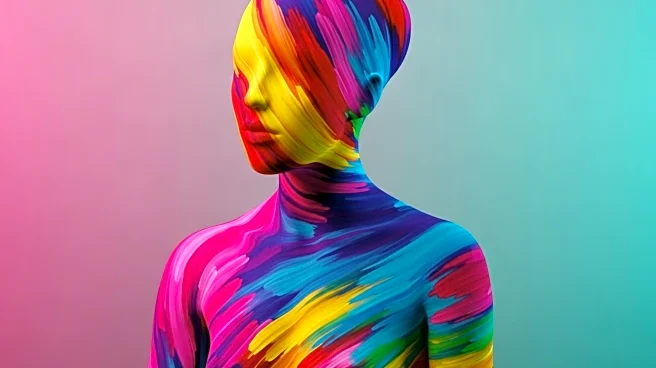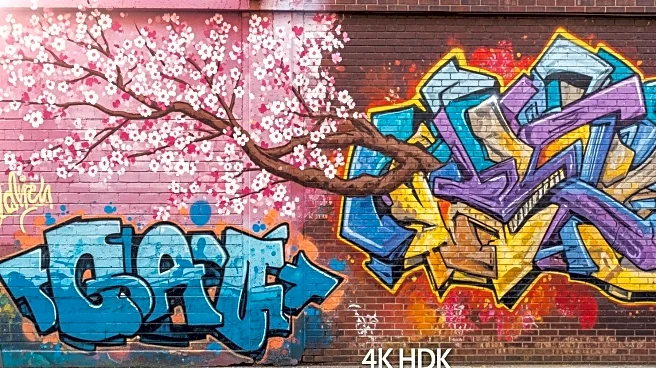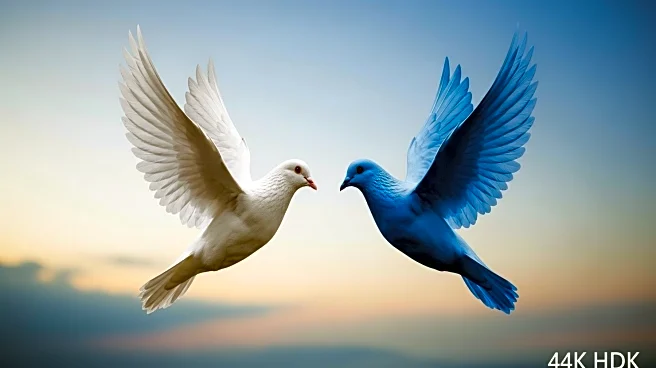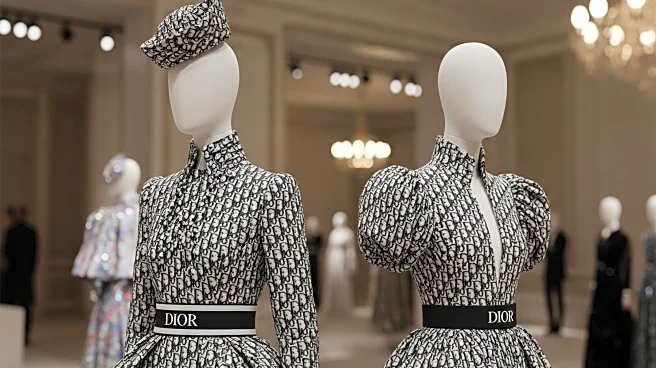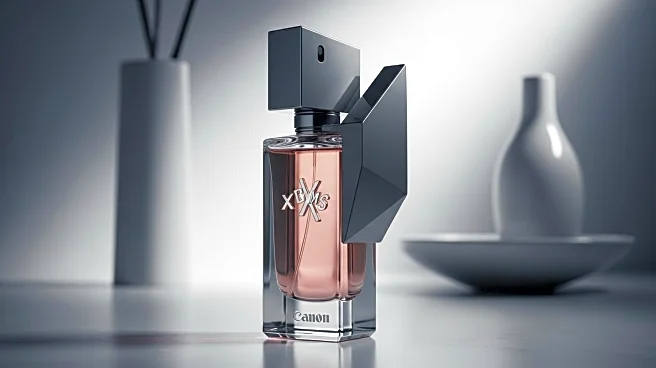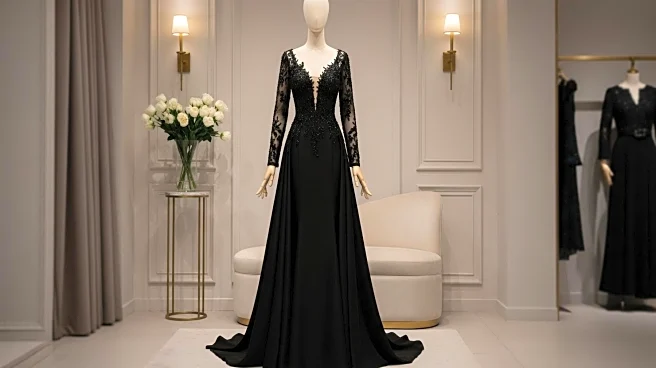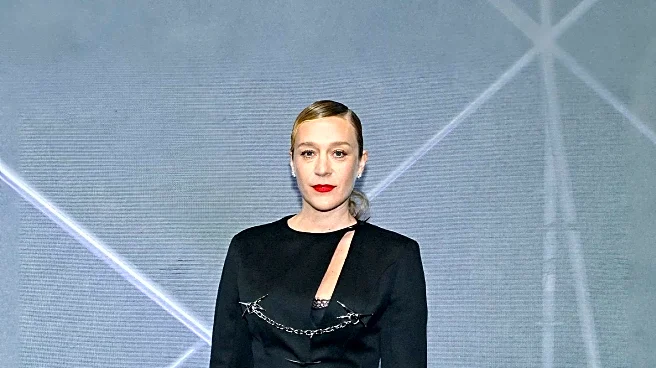What's Happening?
Kenzo has unveiled its Fall 2025 campaign, featuring the work of renowned street photographer Bruce Gilden. The campaign merges Kenzo's men's and women's collections, showcasing a blend of quirky and sophisticated styles. Gilden's photography captures the essence of 'raw urban energy,' highlighting the brand's unique designs, including bunny graphics, balloon trousers, and mohair HotPants, alongside kimono and tuxedo jackets with satin trim. Kenzo's creative director, Nigo, drew inspiration from Japanese tailoring and a 1979 rabbit drawing from the archives of founder Kenzo Takada. The campaign contrasts two archetypes: a preppy uptown man and a free-spirited Lower East Side girl, set against a backdrop of New York City's concrete jungle.
Why It's Important?
This campaign marks a significant collaboration between Kenzo and Bruce Gilden, emphasizing the brand's commitment to innovative and culturally resonant fashion. By integrating street photography, Kenzo aims to appeal to a diverse audience, blending high fashion with urban aesthetics. The campaign's focus on contrasting archetypes reflects broader societal themes of individuality and cultural diversity. This approach may influence future fashion trends, encouraging other brands to explore similar collaborations that bridge traditional fashion with contemporary urban influences.
What's Next?
Kenzo's collaboration with Bruce Gilden and the creative collective Little Legs for video content suggests a continued exploration of dynamic and immersive storytelling in fashion campaigns. As the campaign unfolds, it may inspire other fashion houses to adopt similar strategies, potentially leading to a shift in how fashion is marketed and consumed. The success of this campaign could pave the way for more partnerships between fashion brands and street photographers, further blurring the lines between high fashion and street style.
Beyond the Headlines
The use of street photography in high fashion campaigns raises questions about the intersection of art and commerce. It challenges traditional notions of fashion photography, offering a more authentic and relatable portrayal of style. This approach may also spark discussions about the representation of urban environments in fashion, highlighting the cultural significance of city life in shaping contemporary aesthetics.
